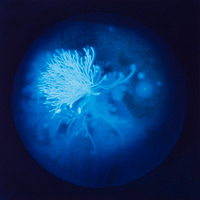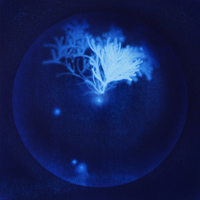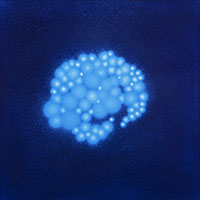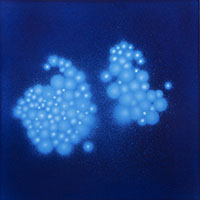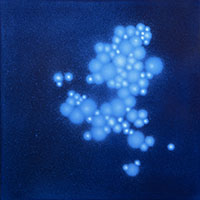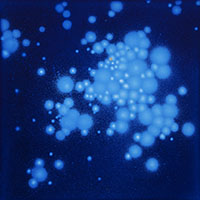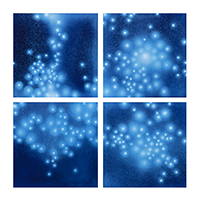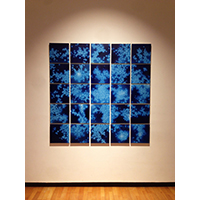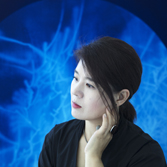
Chang-Ae Song, Youngeun Museum of Contemporary Art

Birth
1972, Seoul
Genre
Painting, Installation, Media
Homepage
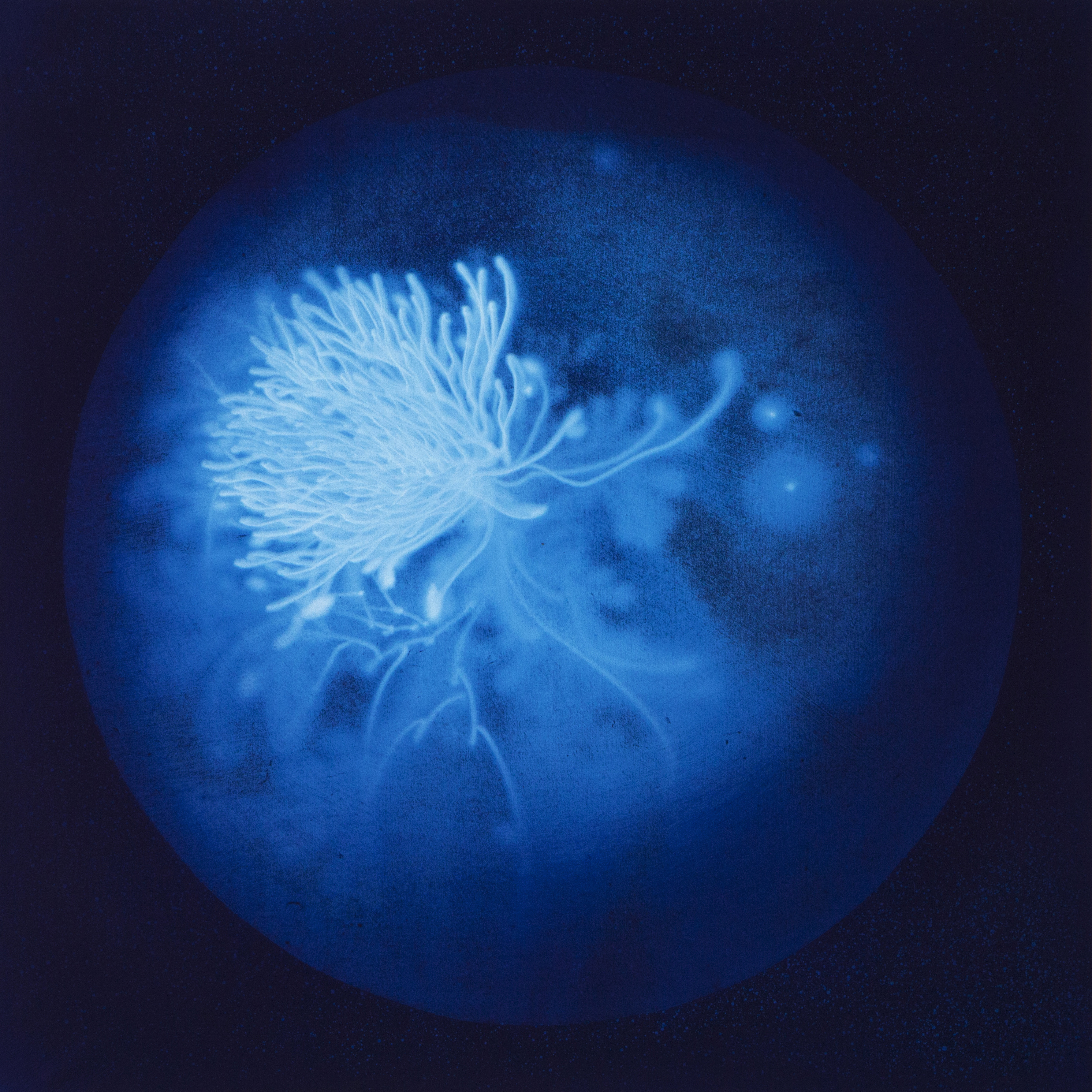
Meet me in the water, like flowing water
People say that building house next to a river make one depressed. It probably is because you get assimilated with the river looking into it everyday. Getting assimilated with the river and get depressed? Is there some unknown ability in the river? Charm the people to suck them into depression. It only possesses man and captures them, and this, in traditional sense, is a stage of becoming one with the nature. Of course, becoming one means the state of an object and I tear down the boundaries to merge into one. But if we think of it in another dimension of host and guest combining into one, there is no better example than water. Substituting object with water makes the state of becoming one seem more vivid. Like this, water suck in, possess and capture man. Then it put you in depression. In this statement, depression is not just depression itself, but more like analogous expression of the inner side. Water, in other words, put you into depression and in truth into the inner side. Sink in water means sink in the inner side. It means, that water becomes full of inner side, and in that flow every thoughts run like panorama. Like this, water becomes me, and flowing river becomes flowing river of inner side.
In this manner, I become water and water becomes me. Therefore the statement that river makes man depressed, means that it actually internalize you and make you meet yourself. As a result, the act of painting water means painting longing for myself (ruminating the mythology of Narcissus), painting longing for the being, and painting longing for the ancestor of existence or canonical existence. (Should I even mention that Albrecht Dürer’s Melencolia was actually portraying an artist, and this means the depression itself is a quality artists are born with, and the fact that the depression actually means the tendency to internalize?)
Chang-ae Song paints water. However, it is not just painting water, but paint water with water. Consider it in that water and I become one, you can say that this is an example of even better assimilation. If just painting water keeps the certain distance between water and self and host and guest separated, painting water with water eliminates that distance, and It is easy to be erased case. It must be why the artist paints water with water. Painting water at the same time she wanted to paint water itself (probably has different meaning from Kant’s water itself but also is same) and wanted to become one with water, and like this actually wanted to paint self as painting water. Then she wanted to say that I am water and water is me, and me, existence, world, universe is nothing but water (or something like water.) She must have wanted to paint that state and dimension. (In fact one of her paintings which she composed photos and painted gives an example of the artist becoming one with water.)
Before she started painting water, she painted landscape and seas. However, those landscapes and seas couldn’t exactly be called landscapes and seas. They were landscapes like landscape, and seas like sea. To understand what it means, we have to take a look at her unique way of work. First, she applies charcoal and pigment layer on surface and use air compressor to spray air to paint. She paints with what is left behind the wind. Therefore, to be technical, they are paintings done by wind, and like paintings done by wind the forms are not permanent or decisive. Only the prospect of stereotypes caught in the net of cognition remind you of the similar forms when compared to those stereotypes and that form looks like landscapes and seas by coincidence. The artist’s biorhythm enforces the indeterminate and variable characteristics. The artist’s works are, so to speak, painted by wind and biorhythm. Rather than painting with landscapes and seas in mind, the painting painted by wind and biorhythm by chance reminds of landscapes and seas.
The artist’s painting should be done fast before the pigment is dry while the wind and pigment still can interact, and so it should be finished at once. This is why she produces many works, and it requires high concentration and intuition. This is why these painting painted like this is like landscapes, seas, flow of aura, wavelengths of energy and light, negative film, and condensed(or spurting) vitality. It reminds of sensitive reality, suggests ideological reality, and evokes natural phenomenon like physical phenomenon.
Images are piled up in one image, and this must be because of abundant suggestive power. The artist suggests, rather than settles a form in painting. As known, suggesting is more like emotional skill that extends the painting’s area and category that opens the meaning or form rather than fixing it, so that they can interact with called in other forms and meanings, resulting in suggesting more than what is painted. Maybe art is technique of suggesting, and that technique especially gets reason and appropriateness from the artist’s art works. (Likewise, works with open meaning and forms show, at least with recent works, suggest things that do not exist in water like genitals and faces.)
The artist’s recent works have specificity in that they are water painted with water. Accommodating considerable amounts of major methods and results from previous works, it is different in terms that it is painted with water. The artist probably wanted to portrait water itself while drawing shapeless forms, or seas recalling water. Or it could be naturally lead to water by flow of life as these works that powered by the intuition and biorhythm that plays crucial part in painting the painting. Anyhow, the artist paints water, and this time she added water with wind in airbrush. The painting still comes from layer of charcoal and pigment above it, but this time, it is the water that is medium, not wind and the surface effect is comparably more soft, subtle, delicate, and internal. It is as if I am assimilated to the water itself and permeated to be in the process, state and dimension of becoming one. The painting is like watching gentle ripples on the surface of the water, and waves breaking, making small bubbles with tiny shapeless stains.
It is painting of inactivity and movement. The inactivity and movement overpasses natural phenomenon to expand into inner landscape. In other words, it is like watching faint light bundle floating in deep darkness, and watching slender thread of conscious wandering around the abyss of unconsciousness. It captures like raging wave closing in, and it leaves dim lingering imagery stepping back to the other side of endless darkness. Suddenly, where am I standing(belong,) am I watching the water outside of the water, or am I watching the water inside the water. If not any, am I watching the water as water? (Is it too sudden to recall the ‘butterfly passage’ of Zhuangzi in which the butterfly becomes one with Zhuangzi and the host and guest becomes one.) Like this, the artist’s water painting is geopolitical position and marks the topology of existence. It is caused by expanded reproduction of water painting from natural phenomenon to inner landscape. To this, the painting style of filling the whole surface with the surface or inside of water conveys the situation logic like I am facing the water itself and assimilated with water realistically.
Like this, the artist’s painting drops into water, drops into darkness, drops into unconscious and abyss, drops into the universe and drops into the original and original form in which the existence began. Is it womb or amniotic fluid. Is purgatory nothing, is it death or darkness itself. To the artist, the water itself means water, but to Kant, water is given intuitively and is the reason for sensible existence and is not a subject to reproduce. Under no circumstances can it be reproduced. The artist maybe wanted to paint water itself as painting water, wanted to paint what is inimitable, wanted to disappear without trace with what is inimitable, and wanted to reach the end of existence to burn like fireworks.
These capturing or dropping, disappearing or burning is partially to transparent blue. Deep transparent blue is part of the aura of the artist’s recent works with slender bundle of light floating in dark. In romanticism, blue was the color of death, and as we all know romantic period was an era concentrating on the after life rather than current life, and blue was the symbol color that guides to the after life. Only assuming that the interaction of charcoal, pigment, water and the paper’s soaking characteristics made such result, the mysterious color that maybe only the sense would know is borrowed by the artist to reveal the depressing existence, therefore showing the internal abyss of existence and maybe wanted to reach the abyss herself.
Written by Kho, Chung-Hwan(Art Critic)
On Song Chang-Ae’s Mæss Land Series
Mass + Mess = Mæss Land
The term “mæss,” used in the title of Song Chang-Ae’s Mæss Land series, is a neologism and a portmanteau combining “mass” and “mess”: the former connotes an amorphous form, the common people, or the crowd, while the latter connotes disorder or chaos. The expression used in her works refers to the Holocaust, Abu Ghraib, or the land in which human beings were used as Maruta (guinea pigs) for inhumane experiments as an example of the suffering caused during the Japanese colonial rule over China and Korea, and symbolizes the land over which the cadavers of such atrocities lay en masse, or a metaphor for an era that was particularly marred by such tragedies. Therefore, “mæss land” can be interpreted as a keyword that connotes both the zeitgeist and the location, metaphorically expressing a cursed period or place. This keyword indicates both directly and indirectly that the direction pursued by Song in her works is not ordinary and discreetly conveys discourses relevant to current affairs.
In keeping with the era of globalization, Song Chang-Ae does not confine her interest to issues in Korea or neighboring countries; instead, she has taken a deep interest in subtle and delicate issues from every corner of the world, with the gift of thinking about faraway tragedies as though they were her own. Therefore, her works manage to capture an incident and related meanings from a humanistic perspective through the idea of shared suffering across all of humankind. This is because countless problems afflicting the earth are not confined to any one specific region; their ramifications may spread across the world and sometimes evolve into tragic incidents that may be inflicted upon anyone. Therefore, images used for the Mæss Land series cannot simply be regarded as incidents that bear no relevance to us or could not possibly happen to us.
Many people, and in particular the Korean people, are sometimes deemed to have a tendency to easily forget tremendous tragedies that were once inflicted upon them. Typical examples include the collapse of the Seongsu Bridge and the Sampung Department Store, which occurred only several years ago, but have already slipped out of the public memory and are no longer mentioned in current discourse on social issues.
Of course, a tragedy is not necessarily a coincidental occurrence. There will have been inevitable causes that led to such a tragic occurrence, and beyond the tragedy, there may have existed grave mistakes or violations of law that contributed to triggering such a calamity. Mæss Land was designed as a warning to people who are uninterested in situations that should be taken seriously and who simply regard them as adventitious occurrences.
Here is an analysis of what caused these catastrophes. First, the Holocaust is perhaps the worst atrocity inhuman history and refers to the genocide of approximately 6.5 million Jews at the hands of the Nazis during World War II; under Hitler’s rule, the Jewish population in Germany was ruthlessly victimized as a minority without their own country. I believe there are two main reasons behind this tragedy. The first reason, in my view, is that after Jacob’s sons sold their youngest brother Joseph to an Egyptian merchant in the Old Testament era, they traveled to Egypt in search of food to fight the famine plaguing Canaan; and during their time in Egypt, they became enslaved until they were miraculously rescued by Moses. Although they had been liberated from thralldom under Egypt, this left the Jews with no country of their own. Second, in the era of Roman colonization, Jews were held responsible for crucifying and killing the innocent Jesus Christ. Regarding the Abu Ghraib incident, Song shows heaps of human bodies or graves in reference to a notorious prisoner abuse scandal that took place during the Iraq War, which occurred since Iraqi political leaders including Saddam Hussein were accused of secretly orchestrating horrendous crimes such as the 9/11 terror attacks of 2001 in partnership with Osama bin Laden. Marutais a tragedy of many Koreans used for human experiments by Unit 731 of the Imperial Japanese Army during the Japanese colonial rule. In the late Joseon period, corruption and partisan wrangling between the Schools of Old Learning and New Learning had become so severe that national security was neglected, which potentially served as a trigger for the 36-year-long rule by Japan. What does the artist endeavor to say to mankind regarding these tragedies?
Song aims to warn humankind about our contributions to the occurrence of such mishaps, and criticizes the selfish perspective of those who either directly or indirectly caused historical tragedies. Therefore, the artist presents a symbolic visual language regarding the various problems caused by the decisions made throughout the lives of such figures.
Cloud signifier appears between the abstract and the conceptual
The Mæss Land series stand in between conceptual, abstract, and installation art, which strongly reveals the will that the artist wishes to express, to freely traverse within the scope of symbolic signs as a representamen. Therefore, the signifiers that she intentionally reveals tend to exert a strong appeal as aesthetic signs since they sometimes feature intensely conceptual images, and at other times dual structures of contrasting color are placed in conflict or in juxtaposition. In the Mæss Land – cloud or clod series, for example, black leads to vermilion, which then encounters the white sign of blank space, thereby creating an intense sensation through the contrast of the red background against the white sign. However, the artist is somewhat hesitant in her reservation against the perception of such visual signs as being excessively cruel or serious.
That is why the artist devised the sign or signifier of clouds. Psychologically, a cloud acts similarly to a smokescreen, thereby serving as a matrix or vessel for embracing tragic situations. The effect of clouds aids in making the audience feel relieved. This refers to a situation in which art depicting tragedies is alleviated through the artist’s imagination. For example, the brutality depicted through the distorted images or torn faces in the works of Francis Goya, Francis Bacon, or Kiki Smith are transformed using a subtle process of alleviation, which allows artists to interpret signifiers of brutality in the language of aesthetics. This is made possible because the aforementioned mechanism involves an alleviation process through which prominent artists mobilize their inner power to appeal to the audience.
Horrendous wars are generally followed by the alleviation process of the tragedy, for which the power of art is generally mobilized. This contributed to the emergence of artistic trends such as the modern art exhibition titled the “Armory Show” behind Dadaism in World War I and Art Informel painting and action painting during World War II. Song Chang-Ae’s Mæss Land series can also be translated as the artist’s effort to alleviate horrible atrocities including the Holocaust, the Iraq War, and the Japanese colonial rule.
Dripping colors beyond cathartic expressionism
This work not only transcends the scope of cathartic expression to purify tragedies but also embodies the artist’s will to address humanity’s tremendous challenges by visually and implicitly conveying a message of forewarning. In the past, the wrongdoings of a dictator or a ruler with sole decision-making power caused the majority of social problems, but today the errors or wrongdoings of the public, the masses, can cause catastrophic events as seen in the Mæss Land series. In this case, what are the implications to be drawn from the mistakes of the masses, the public, or the perpetrators? The artist expresses her critical view on the structural aspects of today’s world, which began with the rise of citizens in the period after modernism or the Industrial Revolution and a transition from the ancient regime of autocratic rule to the modern society led by the public. More specifically, after the rise of pop culture during the 1960s, consumerism and commercialism permeated throughout the world, and humanity was gradually seized by materialism; these changes in the public psyche posed new types of challenges on human civilization, including global warming, environmental destruction, and genetic modification, which had the potential to cause an apocalyptic tragedy, a warning that Song implicitly delivers through her work. The artist expresses, through the heaps of naked dead bodies on the “Mæss Land,” her own will regarding the viewpoint of today’s humankind, in other words,her sense of duty as an artist to send a warning. Tragedies cannot be simply seen as unfortunate incidents, but they must be seen in relation with humanity’s fundamental problems. In addition, the dripping technique employed in this work creates an effect that surpasses the simple dripping of colors. By exploiting watercolor’s materialistic properties and gravity, the technique amplifies the work’s quality as a painting. The artist chooses this technique out of her desire to express the situation in a less graphic way, whereas the dripping colors can be interpreted as a signifier of death, tears symbolizing a tragedy, or raindrops soaking the land of tragedy. These three signifiersdemonstrate the artist’s state of mind in the face of tragedy.
Acomplex mass of fallen corpses
Song’s Mæss Land is filled with corpses without even a clump of grass. Here, lifeless bodiesdecorate the endless expanse of land as if they were the carcasses of livestock culled to destroy diseases like mad cow disease. All the bodies lie prostrate in a gruesome display amidst the fog-ridden land of tragedy. Rather than expressing this situation directly through visual means, however, the artist instead uses dripping techniques or create a semblance of abstract paintings using the combination of vermilion and black. A huge, jumbled mass of corpses and blood stretches indefinitely across the canvas, resembling a grotesque mountain or a field. The scene can also be likened to masses of fish that suffocated to death in green or red tides caused by algal bloom, as a metaphor for the imminent catastrophe to befall upon humanity. In her works, the artist presents a negative future for the world, which corresponds to Nietzschean nihilism and symbolizes Adorno’s dystopia, thereby showing a tragic end to the worship of material values.
Therefore, the Mæss Land is an ambivalent double signifier simultaneously indicating compassion for humanity and the tragedy that awaits us, as well as a sense of solemnity in the stark revelation of the dry sensibilities and strong secular characteristics of the post-modern world. Refusing to simply restructure the suffering of humanity to expose tragedy, Song’s work expresses the artist’s will to heal or alleviate the pains of the world through her artistic sensibility.
A warning against selfishness, from rulers to the masses
A key point in interpreting the Mæss Land series is the implication held by the artist’s words with “compound” meanings: the statement behind Song’s work does not simply target a certain person or group, but instead serves as a vessel to contain multiple meanings that are imperative in encouraging the viewer to contemplate ambivalent signifiers. Behind such signifiers lie the artist’s multifaceted accusations towards the selfishness of both rulers and the masses who are each inclined towards a particular bias. The artist is sending warnings to the selfish corporate enterprises that secretly discharge wastewater or discard industrial waste with no conscience; manufacturers of tofu or fermented soybean that use blight-resistant, fast-growing GMO beans in order to raise profits; corporations that release endocrine disruptors; multinationals building environment-polluting factories in third-world countries; and selfish corporations from advanced countries that exploit cheap labor and cause pollution.
As indicated by the title Mæss Land, the message is sometimes illustrated explicitly, and symbolically at other times. The work reflects the artist’s wish to prevent an apocalyptic tragedy that could someday strike all mountains, rivers, and oceans shared by humanity as destructively as the atrocities committed by the Nazis who terrorized and tortured fellow human beings. It also reveals a strong voice of alarm against the selfish attitude of the masses that vaguely feel that these issues are of no personal relevance.
Park Ki-woong (Ph.D in fine arts, visiting professor at Hongik University Graduate School)
A Thousand Tears, A Thousand Routines - Listen to the message of water
Images
pierce the deep heart of artists like water and wind, and then they swing and
soar to the surface of the world. This process is repeated over and over again,
and meets the absurdity of the world. Her sense of touch, which cannot bear
this absurdity, tries hard to reply with images that always connect her with society.
This is her aesthetic morality as a creator. Dual movements of falling into
narcissism and escaping from narcissism crash into each other inside the artist
and spin around.
Artist Song,
Chang-Ae’s “Thousand Routines” is a project in which 1,000 citizens connected
with the artist and have taken one digital photo of ‘My Routine’ on April 16thevery year for the last 3 years, from 2015 to 2017, and have collected the
results using social networking. The artist matches the images of 1,000
people’s routines to 1,000 images of water drops, called the “Thousand Tears”,
one on one, and constructs the social landscape that the artist feels and
interprets. Song connects and contemplates the traumas of each person,
including the artist herself, who is living in the present time, with the theme
of ‘Sympathy and Communication’.
I try to
connect my trauma with others' and contemplate them. I try to talk about
organic lives by capturing moments from 1,000 people’s diverse lives through
the movement of ‘water’. People connected with each other within the network of
a society live their lives growing and evolving. “A Thousand Routines” is a
project that lets people living in the contemporary era reflect on themselves
through the perspectives of each other, and examine with introspection the
meaning of ‘relationship’ in contemporary lives. – Artist's Statement
‘The Tragedy
of the Sewol Ferry’ shook South Korean society. Song embraces the tragic
disaster of this era as her internal conflict, just as ‘The Raft of the Medusa’,
was taken by the French Romantic painter Gericault. This disaster incites the
artist to obsessively agonize over the essential meaning of her presence. The traumas
of a society become the traumas of its individuals. The opposite is also true. Song
produces a thousand drawings to heal the wounds of herself and others, as if
performing a Ssitgim-gut, a shaman ritual for cleansing a dead person’s soul in
Korea. The ritualistic performance through art and image begins to work, and
this performance becomes a collective activity rather than an individual
activity.
Sharing joy
and sadness together is a virtue. Especially, empathizing with people’s sadness
is the way to create the most fundamental energy needed to make a meaningful
life and culture in spite of the numerous wrongdoings and mistakes in the
history of humankind. If humankind loses its ability to sympathize with other
people, it is no longer possible to form a community. History tells us that
humans have been through countless conflicts, disputes, terrors, and wars, but have
still not lost their dignity, and have pursued a good-hearted and noble vision,
and have gone forward through the power of empathy and communication.
Then, why is
‘routine’ so important? Why does the artist choose ‘routine’ as her theme?
Because such a habitual, not special and not meaningful, relationship between
time and action, called routine, is organized to create a huge accident. Judgment
and actions that nobody pays attention to actually become an important trigger
to make an immense change in human history. Microscopic forces that are
invisible unless you look into them more deeply can change the world more than
the great visible powers. As the labors of anonymous workers are the motive
power that builds human civilization, so the individual powers of countless
anonymous citizens unite, visualize the communion of empathy, and finally
connect to specific actions. This process is the general rule in a society. The
reality of social philosophers is the reality of that so-called routine. Thus,
it is impossible to change the world unless the routine that forms life
changes.
Maybe art is
not truth, in other words, but it is clear that there is truth inside the
artwork that people empathize with and agree with. However, the artists’ dilemma
in creating is that artistic activity differs from the usual activities that
produce and move general routines, and reality can be easily considered useless
nonsense, disconnected from the truth of life, separated from a radical change
of environmental and social conditions, and can become helpless. What kind of
truth can be put into indirect activities, even those with slow responses? Even
though they contain truth inside themselves, images do not have words, and so we
need to read the message in the silent images.
Depending on
the artists’ aesthetic stance, contemporary art can be traditional and
conservative, avant-garde and experimental, or ideal or snobbish; the artists’
attitude and vision change. Most artists face the difficulty of witnessing a
direct reaction - as it is called in reflection theory - towards incidents and changes happening right
now. With any knowledge or any great artistic approaches from the past, artists
‘feel’ helpless in front of tragic moments in reality. How can we free
ourselves from this feeling of helplessness, and from this sense of defeat? How
can we not run away from it, face it daringly, and sympathize with it in our
heart and overcome it? Numerous thoughts fill the head.
The Abu
Ghraib Prisoner Abuse Scandal in Iraq in 2004 was such a shocking incident to
Song. She produced a series of drawings that looked as if she had documented
the incident as an artistic report. The images of Iraqi prisoners piled up naked
were the most tragic loss of humanity. The experience of being a powerless
being that can do nothing but stare when humans throw away their own dignity could
be the most humiliating trauma for the artist. The artist cannot help but ask
herself, "What can art do? Is the vision of art that tries to harmonize
with nature still meaningful? Can I and my art convey a certain and sharp
vision and truth to the people that I meet?"
Listen to
the message of the flowing water and the water drops. 1,000 images represent
the images of all creation. These images become metaphors for the truth of all
creation and the true emotion of all people. The face of others is the face of
‘God (Truth)’. Everyday life and reality contain truth, including the world and
myself. Thus, disasters like the Sewol ferry sinking are difficult for artists
to deal with through their usual artistic stance and activities. Such a situation
is the time when artists should demonstrate their strong concentration and keen
senses, together with their empathy and communication skills for their communities.
Drastic times require drastic measures. In the same manner, artists use their
extraordinary senses and wisdom as pure individuals and as members of a society,
and the identities that subsist within the relationship with others search for a
new breakthrough in this state of tension. Things happen without any notice,
and the artwork goes somewhere the artist never predicted.
Noam Kim (Chief Executive Officer, Art Space Hue)


















